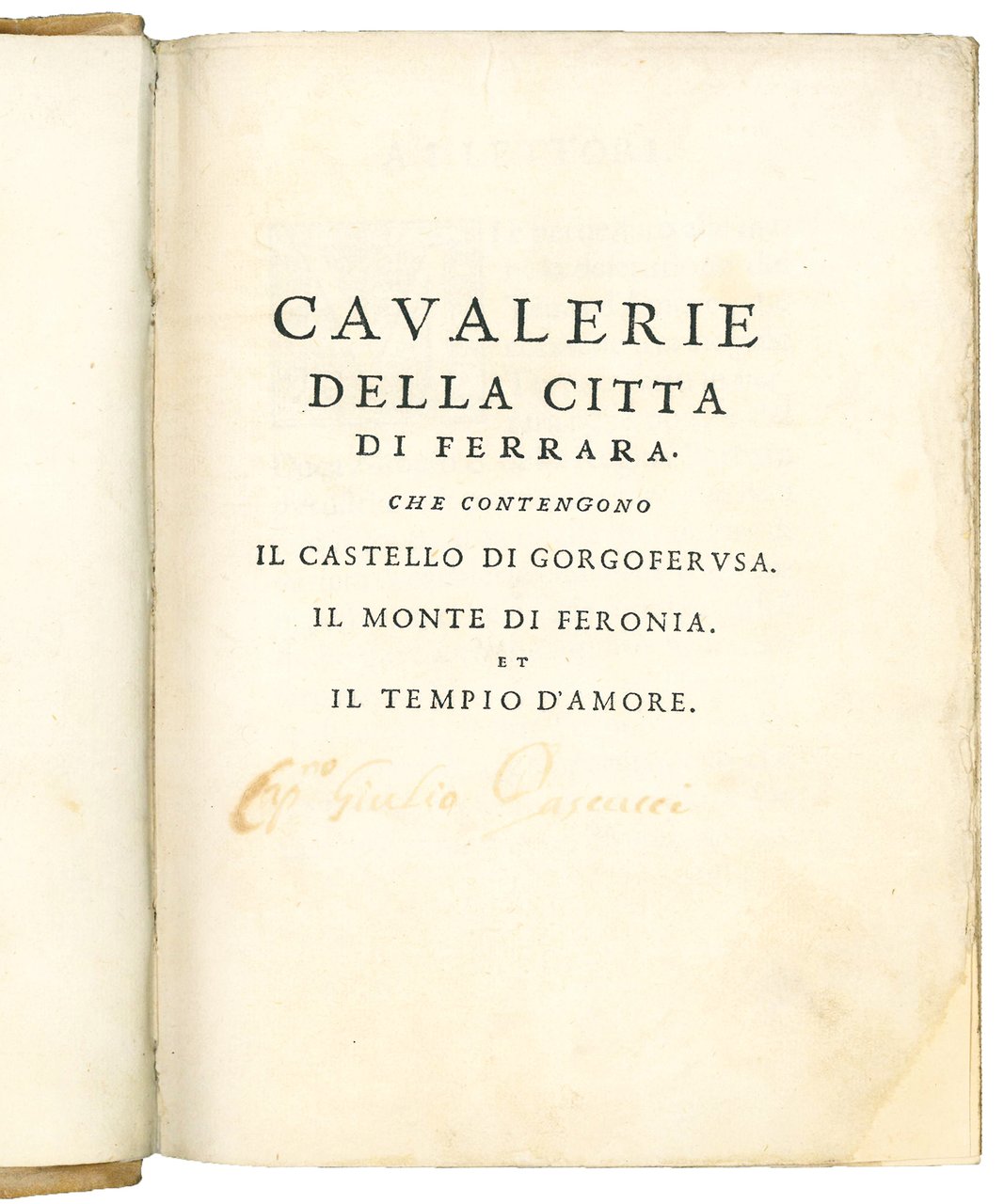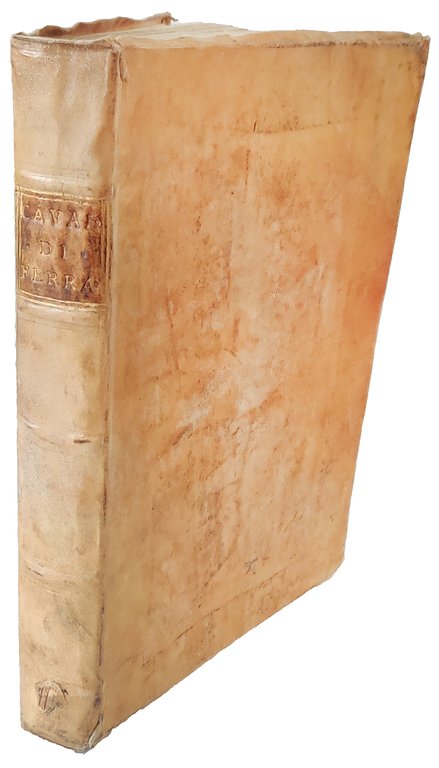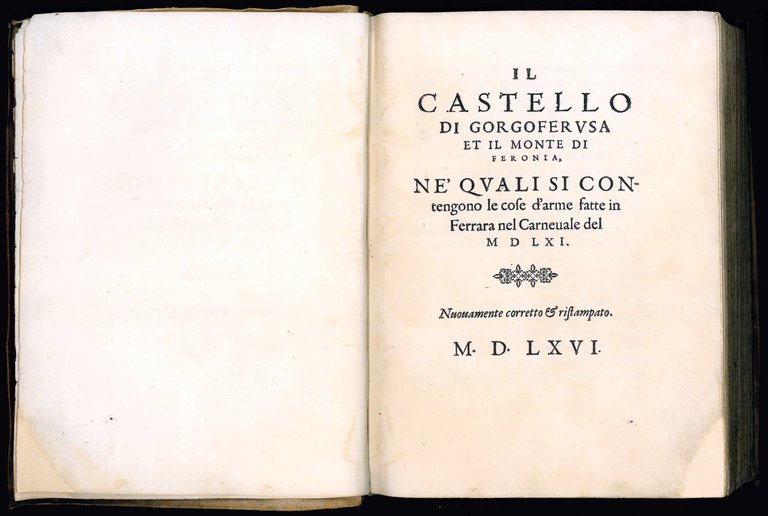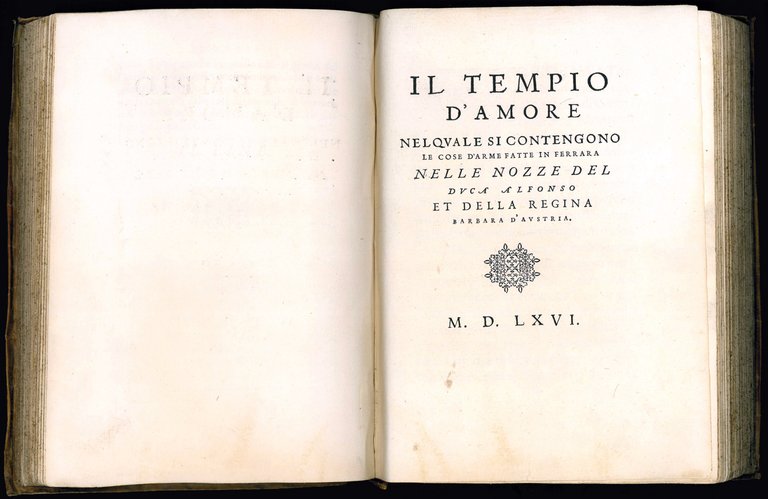



Rare and modern books
ARGENTI, Agostino (d. 1576)-PIGNA, Giovanni Battista (1530-1575)
Cavalerie della città di Ferrara che contengono il Castello di Gorgoferusa, Il Monte di Feronia, et il Tempio d'amore
[Francesco Rossi il Giovane], [1566]
1800.00 €
Govi Libreria Antiquaria
(Modena, Italy)
The correct shipping costs are calculated once the shipping address is entered during order creation. One or more delivery methods are available at the Seller's own discretion: Standard, Express, Economy, In-store pick-up.
Bookshop shipping conditions:
For items priced over €300, it is possible to request an instalment plan from Maremagnum. Payment can be made with Carta del Docente, Carta della cultura giovani e del merito, Public Administration.
Delivery time is estimated according to the shipping time of the bookshop and the courier. In case of customs detention, delivery delays may occur. Any customs duties are charged to the recipient.
For more infoPayment methods
- PayPal
- Credit card
- Bank transfer
-
-
Find out how to use
your Carta del Docente -
Find out how to use
your Carta della cultura giovani e del merito
Details
Description
First collective edition (Il Monte di Feronia and Il Castello di Gorgoferusa had already been printed at Venice in 1561). The first two pieces are attributed to Agostino Argenti (cf. A. Solerti, Ferrara e la corte estense nella seconda metà del secolo decimosesto, Città di Castello, 1900, pp. XXVIII-XXXIX), whereas the newly added Tempio d'Amore to Giovanni Battista Pigna (cf. R. Baldi, Giovanni Battista Pigna, uno scrittore politico nella Ferrara del Cinquecento, Genoa, 1983, p. 35).
In Ferrara under the late Este dukes the tournament was developed to its highest form of elaboration as the old format of ‘defi par cartel' gradually gave way to the ‘tournoi à theme'. The Este court had always been open to northern influences, and was fountainhead from whence flowed chivalric practice in its new renaissance guise. Ferrara, too, was seminal for the marriage of the ingredients of a Greco-Latin humanist culture to the mythology of romance civilization from north of the Alps. In the 1560s under Duke Alfonso II, a series of ‘tournois à the-me' were staged. In these, sustained plots, carefully conceived in philosophical and symbolic terms under the supervision of the leading poets of the day, were adorned with complex stage machinery, a range of literary forms embracing verse, dialogue and monologue besides sung and instrumental music, all on a scale which anticipates not only the equestrian set pieces of the baroque age, but also opera (cf. I. Mamczarz, Gli spattacoli cavallereschi a Ferrara del Cinquecento, in: “Il teatro italiano del Rinascimento”, Milan, 1980, pp. 425-458).
Il Monte di Feronia was staged on the occasion of a visit to the court by Francesco de' Medici. It was performed in the courtyard of the Palazzo Ducale on March 27, 1561, utilizing the same stage and scenery as Il Castello di Gorgoferusa just three weeks previously. It included all the ingredients of the normal Baroque tourney: an introduction set to music, a pre-arranged contest in an arena surrounded by spectators between a number of squadrons on horseback accompanied by many supernumeraries possibly in chariots or carriages, a raised stage with movable scenery, music and musicians, some in costume. “Il torneo regge sulla base di un'articolata finzione. La ‘regina di Alfarabia' si fa annunciare nella città di Ferrara per raccontare le sventure del suo consorte, Colocauro, re di Panticapea, dal nemico preso e fatto prigioniero. Vengono in seguito stabilite delle intricate regole di combattimento per effettuare la sua liberazione, con definizione dei premi, dei rischi e quant'altro. Così viene creato un fantasioso pretesto per l'esecuzione di tradizionali prassi cavalleresche, che qui diventano parte integrante di una non troppo concentrate azione drammatica. In tal modo gli attori, i musicisti, insomma gli artisti, finiscono per ‘collaborare' con più schiere di cavalieri ferraresi nel contesto di uno spettacolo straordinariamente eterogeneo. Il ruolo non trascurabile riservato alla musica emerge con chiarezza da un'attenta lettura della summenzionata descrizione. Abbondano i riferimenti al canto e al suono, anche se non spunta il nome di alcun musicista” (T. Walker, Echi estensi negli spettacoli musicali a Ferrara nel primo Seicento, in: “La Corte di Ferrara e il suo mecenatismo 1441-1598. The Court of Ferrara & its Patronage. Atti del convegno internaz

